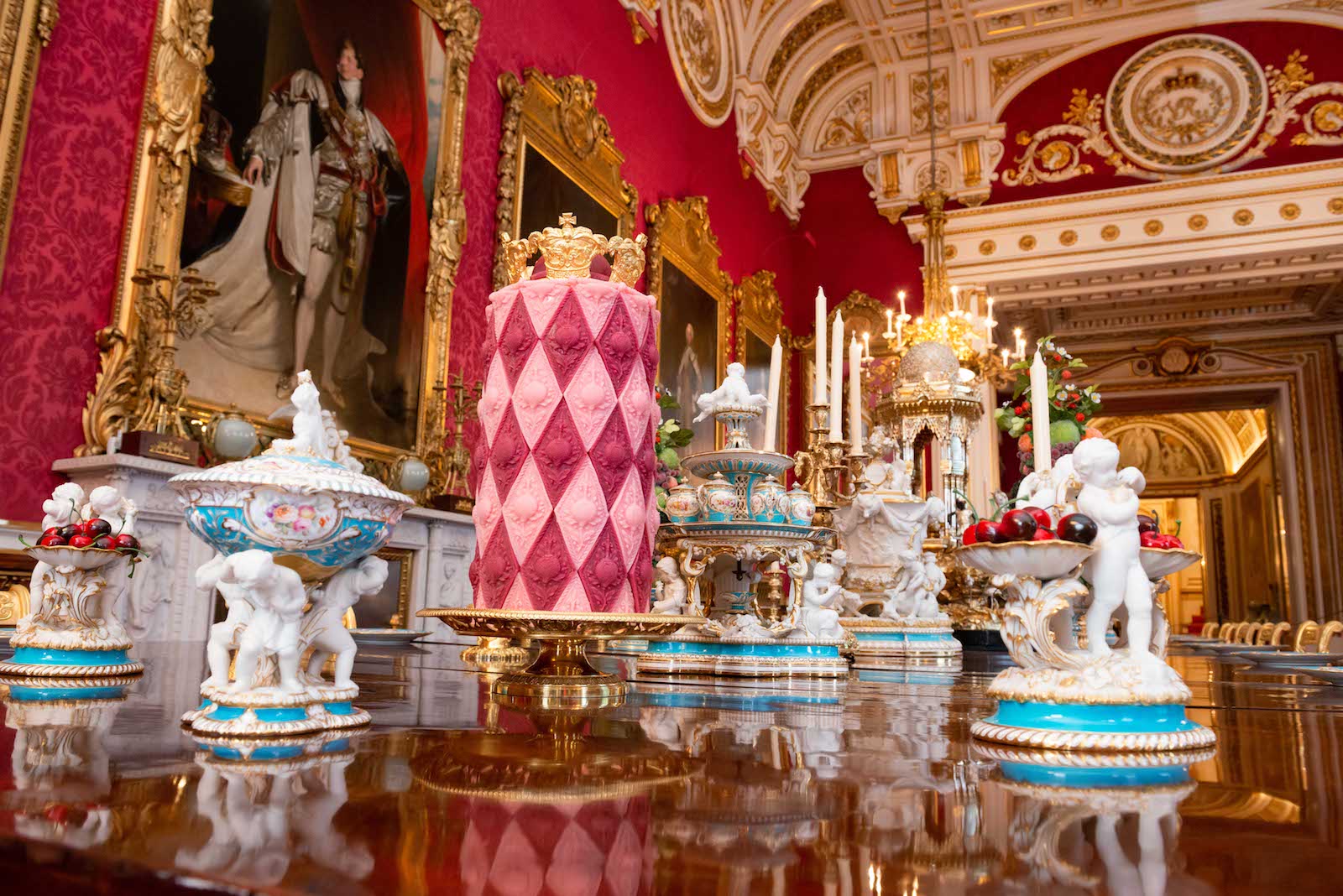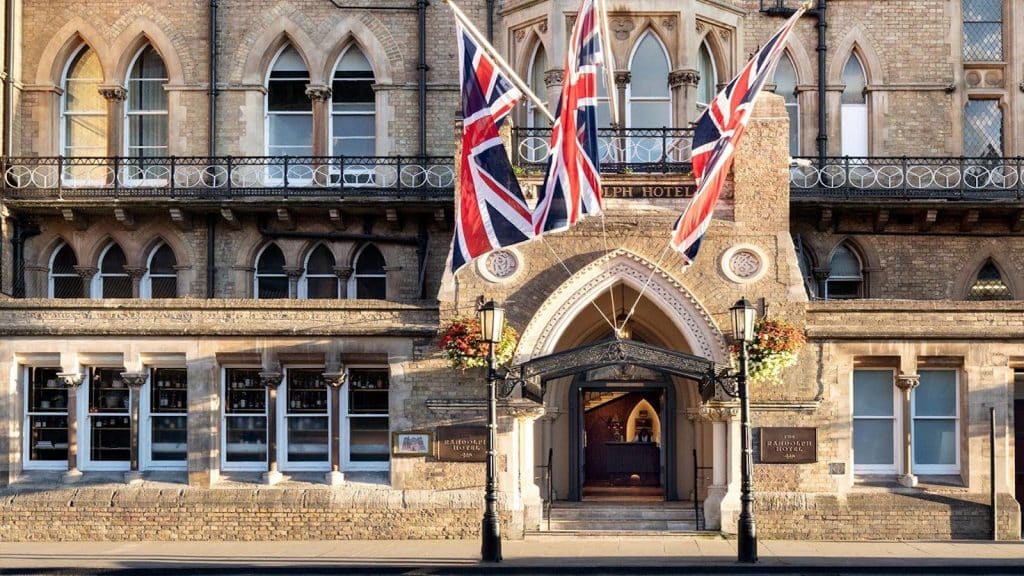To mark the 200th anniversary of the birth of Queen Victoria, a special exhibition: Queen Victoria’s Palace at this years Summer Opening of Buckingham Palace, will tell the story of how the young monarch turned the unloved royal residence into the centre of the social, cultural and official life of the country, and into the most glittering court in Europe. The music, dancing and entertaining that characterised the early part of her reign has been beautifully recreated through special effects and displays thoughout the State Rooms.
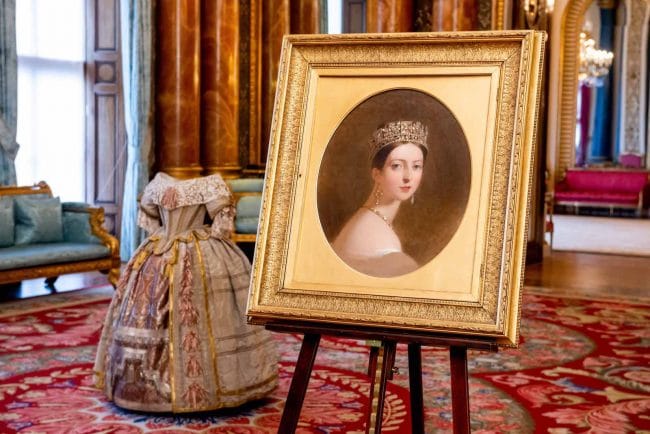
Queen Victoria ascended to the throne on 20 June 1837, aged 18. Just three weeks into her reign, she moved into Buckingham Palace, despite the building being incomplete and many of the rooms were unfurnished without decoration. The Palace had been empty for seven years following the death of Victoria’s uncle, George IV, who had commissioned at great expense the conversion of Buckingham House into a Palace to the designs of John Nash. The King never occupied the Palace, and his successor, William IV, preferred to live at Clarence House during his short reign.
The Queen’s ministers advised her to stay at Kensington Palace, her childhood home, until Buckingham Palace could be brought up to a suitable standard, but Victoria wanted to move immediately and begin her new life. Thomas Sully’s portrait above, provides one of the most striking early likenesses of the young Queen. Victoria sat for the portrait on three separate occasions, and the artist recorded that she laughed and talked: ‘a happy innocent girl of Eighteen’.
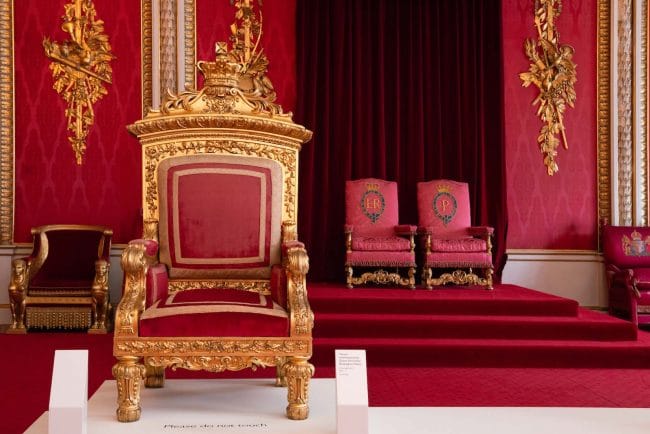
Queen Victoria was the first monarch to travel from the Palace to her Coronation at Westminster Abbey on 28 June 1838. Before sitting in the Coronation Chair to receive the orb, sceptre and ring, the symbols of royal authority, she was dressed in the supertunica, an embroidered robe made from cloth of gold. Victoria later recorded in her journal that she would remember the day ‘as the proudest of my life.’
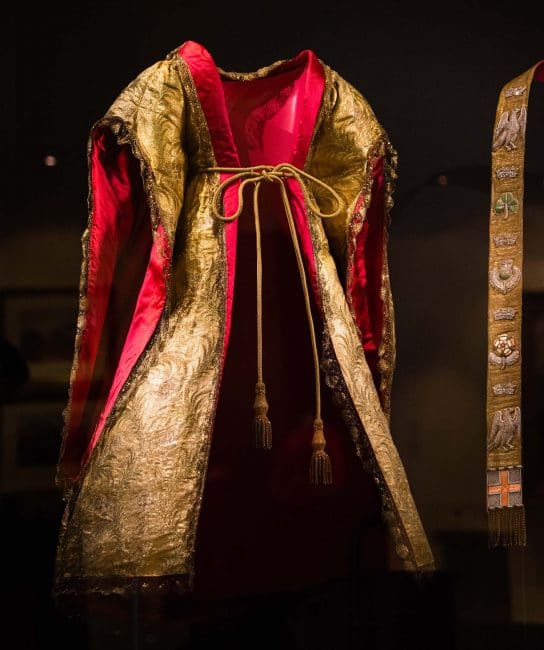
Credit: Royal Collection Trust / (c) Her Majesty Queen Elizabeth II 2019.
She married her first cousin, Prince Albert of Saxe-Coburg and Gotha, on 10 February 1840, and over the next 17 years they had nine children, eight of whom were born at Buckingham Palace. With a rapidly expanding family, Parliament granted Victoria a sum of £20,000 for the completion and extension of Buckingham Palace. Between 1847 and 1849, the East Wing was added at the front, enclosing what had previously been an open, horseshoe-shaped courtyard, and introducing the famous central balcony which has been a key feature of all Royal occasions since.
Shortly afterwards a new Ballroom was added to the State Rooms, fulfilling Victoria’s wish to have a larger space to entertain. The writer, John Ruskin, described an occasion at Court as ‘the most awkward crush…with the ruins of ladies dresses, torn lace and fallen flowers.’
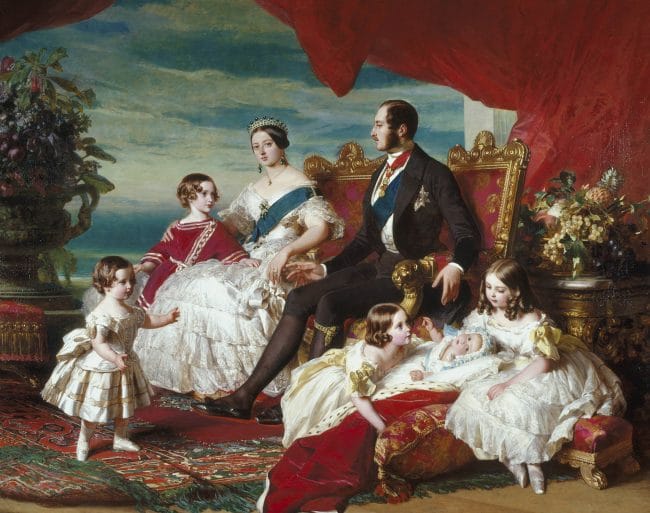
The ballroom was inaugurated in May 1856, followed shortly by a Ball in June to mark the end of the Crimean War and to honour the returning solders. Queen Victoria noted in her journal: ‘Albert, even, who generally dislikes State Balls, enjoyed it, and I could have stayed up till 4, I am sure’.
As part of the exhibition, the Italian Renaissance-inspired decoration devised by Prince Albert’s mentor, Ludwig Gruner, has been cleverly recreated using projections, so that visitors can see what the ballroom would have looked like in Victoria and Albert’s time. In the adjoining Ball Supper Room, the original ceiling decoration of exotic birds and gold stars against a rich blue background has also been added to dazzling effect. A waltz danced at the Crimean Ball has been reimagined using a Victorian illusion technique knows as Pepper’s Ghost.
During their time together at the Palace, Queen Victoria and Prince Albert, held three magnificent ‘themed’ costume balls. These occasions were not only celebrations of British history, but also a showcase for the country’s textile industry. Guests were encouraged to commission elaborate costumes to give work to Spitalfield’s silk weavers, whose business was in sharp decline.
The Stuart Ball in 1851 had its theme as the Restoration period, with guests dressed in the style of Charles II’s court. On display is Queen Victoria’s enchanting costume which was designed by the artist, Eugene Lami, and has a bodice and skirt of grey more trimmed with gold lace and an underskirt of gold and silver brocade. ‘I was so proud and pleased to see my beloved Albert looking so handsome, truly royal and distinguished, and so much admired. I must say our costumes were beautifully made.’
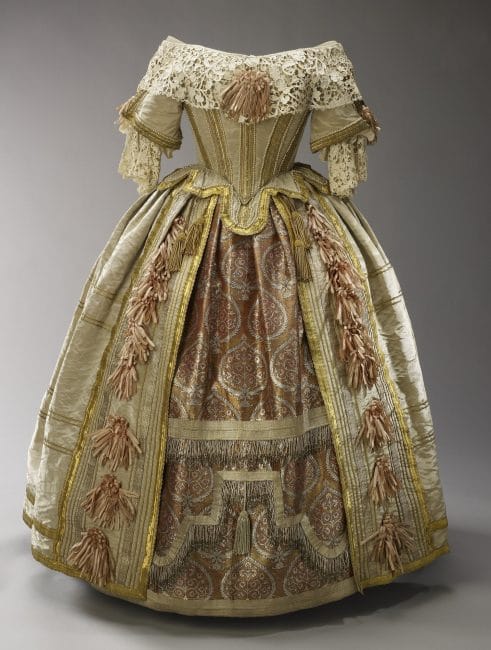
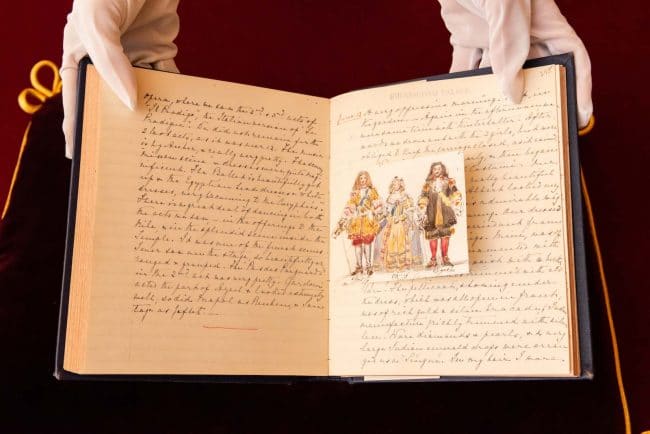
The table in the State Dining Room has been lavishly dressed with items from the ‘Victoria’ pattern dessert service purchased by the Queen from the stand of Minton & Co. at the Great Exhibition in 1851, and the spectacular Alhambra table fountain; a silver-gilt and enamel centrepiece commissioned by Victoria and Albert from R & S Garrard in the same year. On pieces of silver-gilt from the Grand Service, commissioned by Victoria’s uncle, Georg IV, sit replica desserts based on a design by Charles Elme Francatelli, Queen Victoria’s Chief Cook.
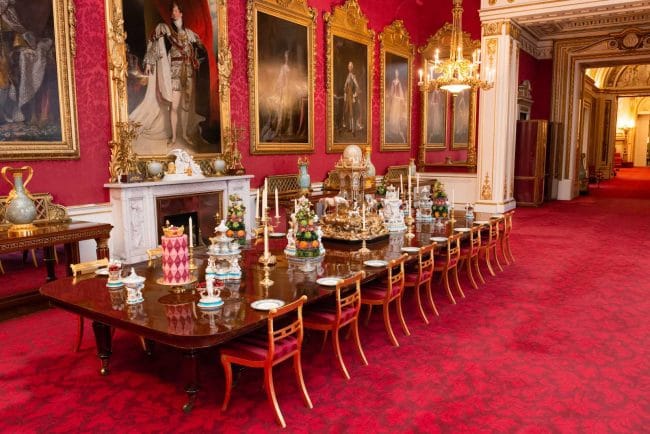
Credit: Royal Collection Trust / (c) Her Majesty Queen Elizabeth II 2019.
Visitors to the exhibition will discover the many ways in which Victoria made Buckingham Palace what it remains today – the headquarters of the Monarchy, a rallying point for national celebrations, and a family home.
The traditions that she created still endure, including the annual summer Garden Parties and the appearances by the Royal Family on the balcony at the front of the Palace. Not to be missed!
Queen Victoria’s Palace is part of a visit to the Summer opening of the State Rooms at Buckingham Palace, and will be run until 29 September 2019.
For advance tickets and visitor information, please visit: www.rct.uk
Images by Royal Collection Trust and CELLOPHANELAND*
CELLOPHANELAND* were guests of Buckingham Palace and the Royal Collection Trust




